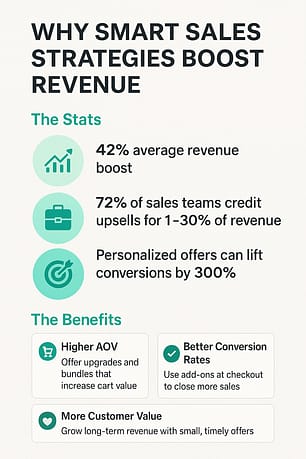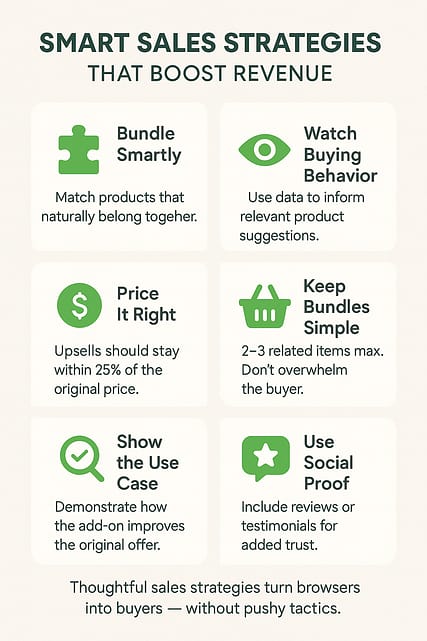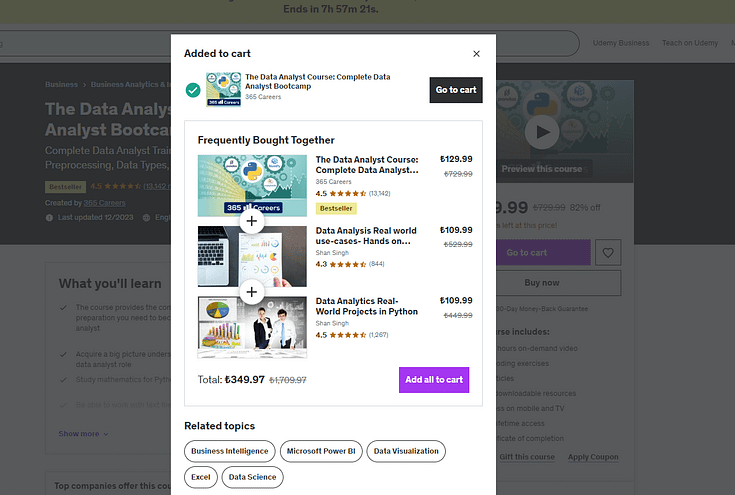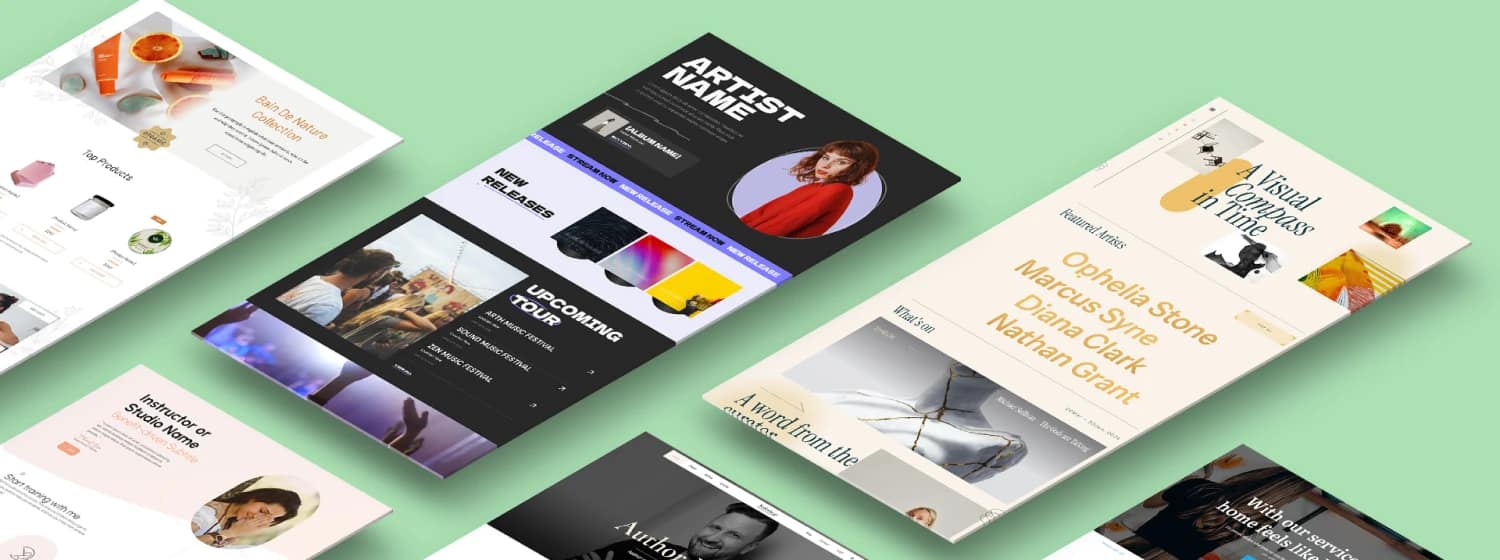Let’s be honest for a moment. As a business owner, you’re likely stuck on a hamster wheel. The endless content hamster wheel. The ad-spend slot machine. The "I'll just check my email one more time" hamster wheel. You do everything you’re “supposed” to do—you build a great sales page, you drive traffic, you celebrate the sales notifications. But when you look at the bottom line, you’re just… treading water. To grow, the gurus say you need more. More traffic. More leads. More everything.
Sound familiar?
I’m here to tell you that the secret to real, sustainable growth isn’t found at the top of your funnel. It’s not about endlessly chasing more. It's about getting more from the customers who have already put their trust in you and said "yes." It's about making your existing funnel smarter, not just bigger.

This is the art of funnel maximization. In this guide, I’m going to pull back the curtain on the core tactics we use and see succeed every day: Order Bumps, One-Click Upsells, Downsells, and the foundational strategy of Cross-Selling. These aren't just buzzwords; they are the engine of profitability for your entire sales funnel.
So, let’s get you off the hamster wheel for good.
Table of Contents
The Order Bump: Your Highest-Converting Profit Maximizer
What is an Order Bump?
An order bump is a low-cost, high-value, complementary offer presented directly on your checkout page. It’s a simple checkbox offer that customers can add to their order without having to think twice.

This single tactic has a staggering average conversion rate of 40%, according to research from Data Driven Marketing. Let that sink in. Four out of ten customers who are already punching in their credit card details will happily give you more money.

So why are most checkout pages a sterile, transactional dead zone? It's a huge mistake. Leaving the order bump off your checkout page is like finding a winning lottery ticket and only cashing in half.
Don't believe me? Let's look at the numbers from a CartFlows case study:
Revenue Impact of a Single Order Bump
Before Order Bump | With Order Bump | |
|---|---|---|
Monthly Revenue | $1,500,000 | $1,525,000 |
Additional Annual Revenue | $0 | $300,000 |
That’s $300,000 in revenue from a single checkbox on a single page. It’s the digital equivalent of finding a forgotten $20 bill in your coat pocket, except it can happen hundreds of times a day.
So, What's Your Version of ' Do You Want Fries With That'?
We've seen this succeed across thousands of funnels. The key is to make the offer a true "no-brainer." A generic offer won't cut it. For example, if we sell an online course, we don't just offer a vague checklist. We offer a "Quick-Start Trello Board" template that lets a student organize and implement the first module's lesson in under an hour. It has to solve an immediate, adjacent problem. So, ask yourself: what's the perfect, low-cost pairing for what my customer is already buying?
Ready for a deep dive? Learn how to craft the perfect offer from our detailed order bump guide.
The One-Click Upsell: Generating Revenue *After* the "Yes"
What is a One-Click Upsell?
A one-click upsell is a special offer presented after the initial purchase is complete but before the thank you page. Because the customer's payment details are already stored, they can accept this new offer with a single click.

Think of your customer relationship like dating. The first sale is like getting a "yes" to a first date. It's a great signal, but it's just the beginning. The one-click upsell is like them immediately saying "yes" to a second date before the first one is even over. It’s a massive signal of trust and enthusiasm.
At this exact moment, your customer trusts you more than they ever have before. So why do most businesses end the conversation? They rush to a thank you page and miss their single biggest opportunity.
Let's put this in perspective. We all wrestle with our email marketing, agonizing over open rates and click-throughs. Now look at this:
Marketing Channel ROI Comparison
Marketing Channel | Return on Investment (per $1 spent) |
|---|---|
Email Marketing | $36 |
One-Click Upsells | $686 |
That's not a typo. Data from over 40,000 merchants using ReConvert shows that post-purchase upsells deliver a return that is nearly 20 times more effective than email marketing. Ignoring this is like showing up to a Formula 1 race with a bicycle and wondering why you're not winning.
Our Core Strategy: Selling a New Identity
This is the core of our own strategy here at Thrive Themes. When someone buys a single plugin, our one-click upsell to Thrive Suite isn't just about offering more tools. It's about offering a new identity. The upsell gives them the chance to go from "person with a landing page" to "person with a fully automated marketing system." The offer isn't about the software; it's about the new capability they can have, right now.
Master this powerful technique with our complete guide on The Art of the One-Click Upsell.
The Downsell: The Strategic Safety Net for Lost Revenue
What is a Downsell?
A downsell is a lower-priced or different alternative offered immediately after a customer declines your one-click upsell. It’s a strategic safety net designed to save a sale that would otherwise be lost.

Let's be honest, rejection stings. Especially in a sales funnel. You've just presented your shiny, valuable upsell, and the customer clicked "No Thanks." The typical reaction? Panic! Shut it down! They said no! But what if "no" didn't mean "I hate you, never talk to me again," but simply, "Not that, not right now"?
A great downsell isn't a discount on the same offer, which can devalue your brand. It's a different offer that solves a smaller, more focused problem. It says, "Okay, you're not ready for the full marathon training plan. How about we just get you the perfect 5k training guide instead?" It respects their decision while still providing immense value. This graceful pivot can recover between 25-40% of failed upsell conversions.
But it’s about more than just one sale. It’s about preventing customer churn. Look what happened when the Drive & Shine car wash implemented a downsell offer for members who were trying to cancel.
Drive & Shine Downsell Case Study
Metric | Before Downsell | After Downsell |
|---|---|---|
Customer Retention Rate | 4% | 11% (+175%) |
Retained Revenue | - | $400,000 |
They weren't just saving memberships; they were plugging a half-a-million-dollar leak in their business.
Learn how to save sales without devaluing your brand in this guide on How to Use Downsells Effectively.
Cross-Selling: The Art of the Perfect Pairing
The Power of Cross-Selling
Cross-selling is the strategic principle of offering customers a complementary product to enhance their main purchase. It’s so effective that it’s a key driver behind the 35% of revenue Amazon generates from recommendations, according to insights from The Good.

Imagine you're hosting a big summer barbecue. You've grilled the perfect burgers. Your guests are lining up, plates in hand. Then, you tell them they have to go to the corner store to buy their own buns and ketchup. You'd never do it, right? It's terrible hosting.
So why are you doing it on your website?
When you sell a product without offering the necessary accessories, you are forcing your customers—who have just proven they trust you by giving you their money—to go to a competitor to get the complete solution. You're effectively acting as a referral service for Amazon.
A Helpful Host Anticipates Needs
Being a good host means anticipating needs. It's not pushy; it's helpful. When you buy a new laptop, you expect to be offered a case or a mouse. While the Order Bump is your 'at-the-register' cross-sell, the Thank You Page, as we'll see next, is your 'after-party' cross-sell—an opportunity to continue the conversation with a delighted customer.
Discover more applications in this Complete Guide to Cross-Selling Strategies.
The Strategic Thank You Page: Your Funnel's Unsung Hero
What is a Strategic Thank You Page?
A strategic thank you page transforms a simple order confirmation into the first step of the next customer journey. Rather than a dead end, it's a new beginning.
Your thank you page is the most neglected employee in your entire company. It shows up to work every single time someone buys from you—on average 2.2 times per order, in fact—ready and eager to engage. And what do most businesses tell it to do? Stand in the corner and hold a receipt.
It’s a criminal waste of potential. While the average thank you page has a conversion rate on cross-sells of 1.7%, some optimized pages see rates as high as 30%. If this kind of post-purchase engagement is responsible for a huge chunk of the Death Star-sized revenue of Amazon, what could it do for your business?
So what should this star employee be doing?
Are you leaving your best employee standing in the corner?
Turn your receipt page into a revenue driver with our guide on Thank You Page Optimization.
The Tech Stack for Funnel Maximization
Executing this playbook requires more than just good ideas; it requires tools that work in harmony. While plenty of tools can handle one piece of the puzzle, the real power comes from an integrated system. Here are the key capabilities you'll need.
1. Core Funnel & Page Building
You need a flexible page builder to craft every visual step of your funnel—from the checkout page to the custom upsell/downsell pages and the strategic thank you page. This is the engine of your funnel. Thrive Architect is built for this, giving you complete drag-and-drop control to bring these high-converting page designs to life.
2. Dynamic Offer Presentation
You need a way to present your offers dynamically. This is especially crucial for downsells (e.g., using an exit-intent pop-up) or for timed offers on a thank you page. Tools like OptinMonster are well-known and powerful solutions for this. Within our ecosystem, Thrive Leads offers deep integration with the rest of the suite, allowing you to trigger offers based on hyper-specific user behaviour on your site.
3. Advanced Segmentation & Personalization
The most profitable funnels are personalized. How do you know which upsell to show a specific customer? This is an advanced tactic, but using a tool like Thrive Quiz Builder before the sale can segment your audience. Knowing their biggest pain point allows you to tailor the entire post-purchase sequence, dramatically increasing the relevance and conversion rate of your offers. It's the key to building a truly intelligent quiz funnel.
4. Driving Urgency & Scarcity
Limited-time offers for upsells and downsells convert significantly better. To do this effectively, you need a reliable way to add a countdown timer with authentic scarcity. Thrive Ultimatum is designed specifically for this job, allowing you to add evergreen countdown timers to your offer pages that compel customers to make a decision in the moment.
5. The Transactional Hub (Your Shopping Cart)
Look, none of this fancy funnel strategy matters if your shopping cart coughs and sputters when it's time to process a one-click payment. Don't cheap out here. This is the cash register of your entire business. It's crucial that your cart solution supports these flows. Popular and powerful options like ThriveCart, SamCart, or WooCommerce (with the right extensions) are purpose-built for marketers and integrate well with the best sales funnel builders.
Frequently Asked Questions
Keep it close to the original. A common benchmark is to offer upsells that are no more than 25-50% more than the original item. This keeps the upgrade within a reasonable range—enough to boost your average order value, but not so much that it causes sticker shock.
Less is more. Aim for one to three related items that clearly make sense together. An order bump should ideally be a single, no-brainer add-on. A thank you page could offer a small, curated selection. Too many options can overwhelm your customer and lower your conversion rate. The goal is to make buying easier, not harder.
Absolutely. Personalized product recommendations based on a user's Browse history, quiz answers, or past purchases can boost conversions significantly. When an offer feels tailored to the customer's specific needs, it feels helpful, not salesy. That’s the sweet spot for maximum profitability and customer satisfaction.
Conclusion: Your Profitability System
So, we've covered a lot. But the order bump, the one-click upsell, the downsell, and the art of cross-selling aren't just isolated tools in a toolbox. They are the gears in a single, powerful profitability machine. When they work together, they create a compounding effect that can change the entire financial picture of your business, all without spending a single extra dime on traffic.
Let's look at that one more time.
Example: Compounding Revenue Impact
Tactic | Assumptions | Additional Monthly Revenue |
|---|---|---|
Base Business | 1,000 customers, $100 AOV | $100,000 |
+ Order Bump | 40% adoption rate @ $30 | +$12,000 |
+ One-Click Upsell | 4.7% conversion rate @ $50 | +$2,350 |
Total | N/A | $114,350 (A 14.35% Increase) |
This isn't about squeezing your customers. It's about serving them so well, and anticipating their needs so perfectly, that they are happy to buy more from you. Each step—from the no-brainer order bump to the helpful cross-sells on a thank you page—is an opportunity to deliver more value, which in turn builds a more resilient, successful business.
The content hamster wheel will still be there tomorrow. The only question is whether you'll still be on it.
Look at your own sales funnel right now. Where is your biggest opportunity? You don't have to do it all at once. Start with one—implement an order bump this week—and start turning the traffic you already have into the profit you actually deserve.



Thank you for the comprehensive article!
The only thing I did not understand is how to implement the upsell / downsell etc. funnel flow. I haven’t found these options in Thrive Themes.
Hey Dario!
Thanks for reading through! We just published a post on how to implement a upsell/cross-sell funnel, and it includes suggestions on when to offer a downsell.
How to Create an Upsell/Cross-Sell Funnel for an Online Course
Typically you’ll build your upsell, downsell, or cross-sell pages with Thrive Architect, or popups with Thrive Leads. You’ll then insert the link to these pages in your checkout tool, or embed the popup on a checkout page (it depends on the tool you’re using)